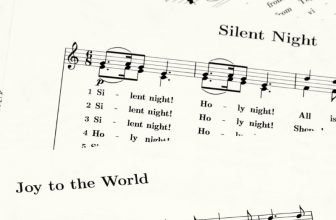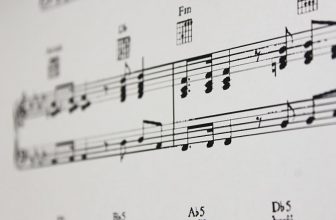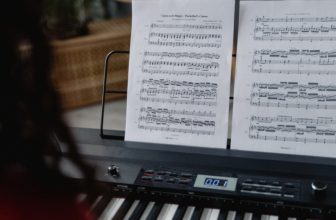What Is Modulation In Music?

Modulation in music is the process of changing the key. In most cases, it also changes the sharps or flats used, the tonal center, and the primary chords and progressions.
Musically speaking, a transition from one key to another and how it’s done is known as modulation. People who listen to music are always surprised by the act or process of changing keys. Songwriters and musicians find this technique useful for making their music more attractive.
You might find it a bit overwhelming since there are many modulation options. In this article, I will try to keep everything simple, focusing on clarifying this important musical tool.
Contents
What is modulation in music?
A transition from one key to another, as well as the method by which this change is brought about, is referred to as modulation in musical terms.
Changing tonal or modal centers is what is meant by modulation. Its most dramatic impact is the contrast or tension that is generated when the change happens in melody and harmony.
An important part of the creative process is selecting the key in which you’ll be creating your tune(s). The scale you use, the number of sharps and flats, and the chords you may utilize are all influenced by the primary key. In other words, the home key you choose.
In tonal music, modulation is a primary source of sonic diversity. Because even though you don’t want to add alternative melodies into the piece, changing the “home key,” will make a big difference. It will help you expand the musical form of the piece and avoid confusion.
A composer may decide to switch to a different key at any time in the composition to spice things up. It’s the modulation that we’re referring to here.
What is a key in music?
A key is a primary tone, or note, that makes up a song’s harmonic foundation.
A key plays a huge part in determining which chords sound excellent when played together. It also helps to determine which melodic notes would function well over certain chords.
In most songs, there is a set of seven notes called a scale that goes from low to high in a certain order. Regardless of whose tonal center you’re using, the keynote is always the “first degree” of the scale.
Keys in music are a group of notes or an ensemble of chords formed by seven tonic notes within the Major or minor scale of the chosen primary note. In the same way that the Tonic is referred to as the primary chord choice.
The chosen key dominates most of the musical pieces. For example, the key of C is said to be in a song when the pitch C is consistently the primary or home note of the song.
Types of Modulation
There are several types of modulation. This includes Direct modulation, Common Chord modulation, Enharmonic modulation, Chain modulation, and Chromatic modulation.
It is possible to modulate the sound in various types of modulation using somewhat varied compositional techniques. Each way of modulating provides a different effect regardless of whether every modulation is used to alter the pitch of a musical piece.
You should develop this skill, including modulation between any two keys, and the ability to shift between them. It will give you much flexibility in your creativity.
Direct Modulation
Direct modulation is by far the simplest sort of modulation to create. It’s also known as the phrase, sudden, or static modulation.
Direct modulation is the transition between two keys that occurs without any harmonic or melodic preparation. You may come by the direct modulation in much popular music and there are two ways to do it:
1. Between different parts of a song, the key changes abruptly.
Examples: Ain’t No Mountain High Enough By Marvin Gaye & Tammy Terrell, and Lucy in the Sky with Diamonds by The Beatles.
2. Repetition of a song’s verse or chorus in a higher key than the original.
Examples: I Just Called to Say I Love You by Stevie Wonder, and I Wanna Dance with Somebody by Whitney Houston.
Common Chord Modulation
While all of the other notes of the previous chord move to the new key in “common chord” modulation, one of those notes is held or repeated in the last chord of that cadence.
It is a way of modulating by avoiding noticeable alterations, so untrained ears may miss it, as it is less obvious than direct modulation. Using subtlety, the composer can achieve dramatic results.
Example: Here, There and Everywhere by The Beatles.
Enharmonic Modulation
In an enharmonic modulation, the sustained pitch corresponds to a new key, but the name is changed based on the tonal context, like Ab becoming a G#.
Example: Shubert’s Songs like Erlkönig and Die Förelle.
Chain Modulation
Chain Modulation is a technique for fast shifting between different keys by employing a series of chords based on an interval cycle.
Example: My Girl by The Temptations.
Chromatic Modulation
Chromatic modulation is whenever the voices of the preceding chord change chromatically from one key to another.
Because it contains the chromatic notes from the preceding chord, it will also produce chromatic notes in the new key. Usually, a secondary dominant chord is employed to create a chromatic effect. They are commonly made directly.
Example: Livin’ On a Prayer by Bon Jovi, and Man in the Mirror by Micheal Jackson.
How to distinguish a modulation?
When you change the key, your piece will sound different even when playing or singing the same melody. Even following the same progression and having more or fewer sharps or flats, this stays true. This is a pretty simple and fundamental approach to distinguish if you have a modulation or not.
Changing the key not only changes the sharps and flats that you’re working with but also changes the tone of the song. The tonal center is likewise shifted as a result.
If you have a work in the key of C Major, many of the chords and notes are focused around the note C, which is also known as the tonic or fundamental. Changing the key from C to A makes many notes start around the A chord. Almost every time you change chords you almost always go back to A. As a result, it alters the pitch.
Modulations alter both the fundamental chords and the melodic progressions, so keep that in mind as well.
How to use Modulations?
To use modulations, you use various ways that chords can be changed in terms of how they work.
The tonic (first degree) chord can become dominant (fifth-degree), or subdominant (fourth-degree) when you change the key center. This means that a tonic C Major chord can also be dominant or subdominant from another key center.
The modulation potential is strong because their tensions seek resolution in modified tonalities. For example, the C Major chord is also the dominant chord (V) of F Major, while also being the subdominant (IV) chord of G Major.
Other techniques include chromatic mediant chord movement, parallel harmonic movement, and cycle chord progressions.
Summary
Modulation in music provides musicians the flexibility to create any kind of dramatic effect. This is done by changing the key of their musical piece. There is not only one way to do it. You can also apply this technique in two direct ways or various indirect ways using both half-tone or whole tone movements and chord progressions.





